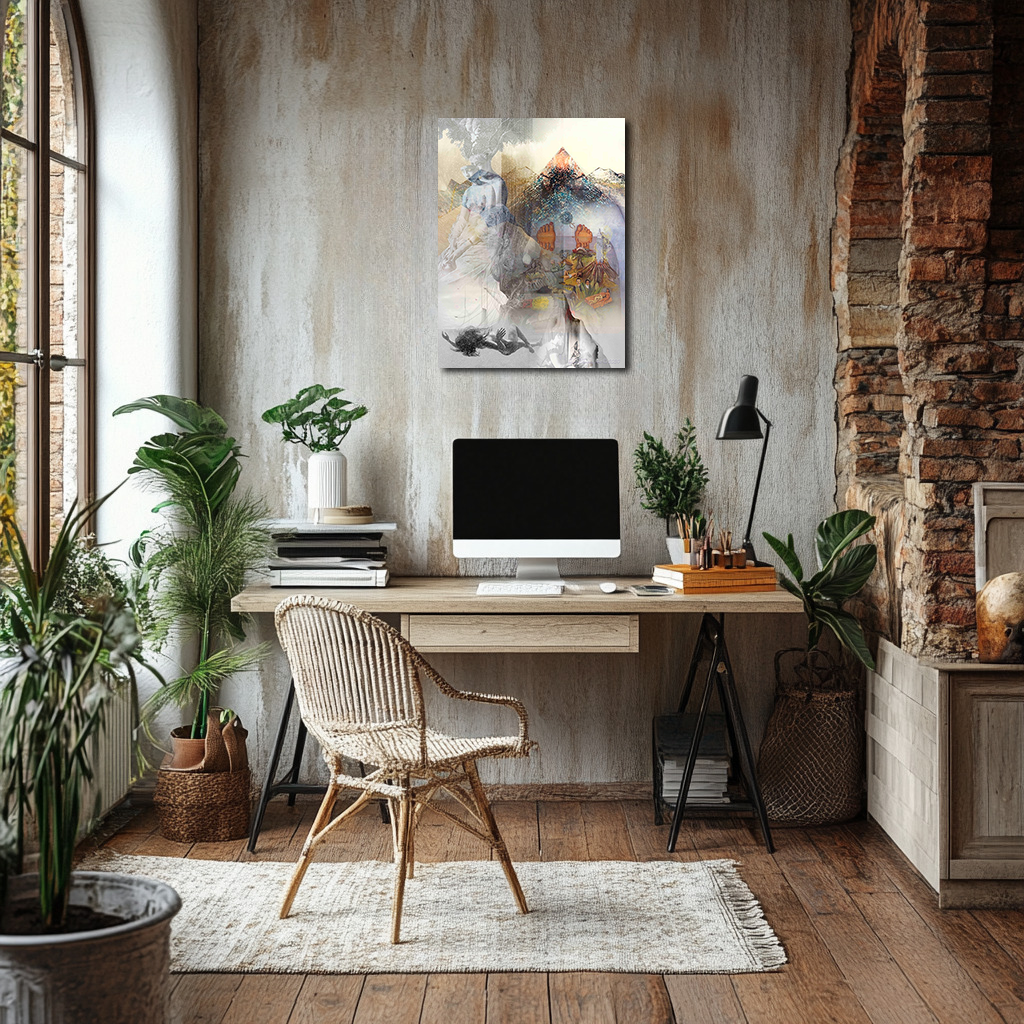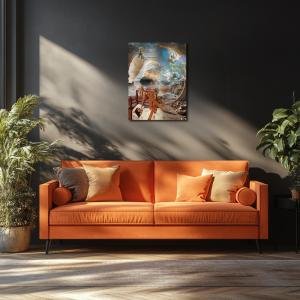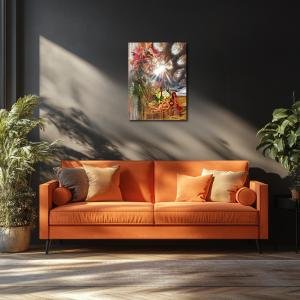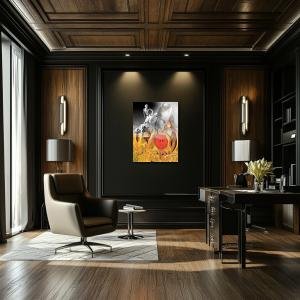What the Water Gave Me
What the Water Gave Me transforms a quiet bath scene into a sprawling emotional landscape, where Frida Kahlo’s submerged legs frame a surreal eruption of memory and meaning. A volcano becomes the spine of her subconscious, with fragmented figures, historical icons, and folkloric visions cascading from its slopes. On the right, warm earth tones—amber, red, gold—evoke cultural vitality and grief. On the left, ghostly whites and moonlit grays suggest loss, detachment, and the erosion of the self. The bathwater becomes a cosmic medium, both birthing and burying Frida’s inner world. This dreamlike collage pulses with grief, mythology, and identity, embodying Kahlo’s enduring ability to turn suffering into sacred symbolism.
Please see Below for Details…
Hotline Order:
Mon - Fri: 07AM - 06PM
404-872-4663
What the Water Gave Me is among Frida Kahlo’s most enigmatic and intensely introspective works, and this surreal collage-based reimagination extends its dreamscape further into the metaphysical and symbolic realms. Kahlo’s original painting, a bathtub tableau of psychological projection, becomes here a sacred geography—an unfolding of her identity through the surreal terrain of memory, trauma, and subconscious desire. The bathwater, which once served as a liminal portal to her past and pain, now expands across this entire reinterpreted visual plane, blending seamlessly with earth, mountain, and sky. Her legs, still visible in the foreground, become the silent frame through which a cascade of fragmented visions pours out. Her body is both landscape and vessel—crucified yet floating, anchored yet dissolving.
This version intensifies the sense of duality: life and death, desire and detachment, rootedness and disintegration. At the center, a mountain rises like a metaphoric volcano—an eruption of her memories and inner world. From it flow scenes of Mexican folklore, colonial trauma, political allegories, and personal sorrow. The appearance of Kahlo’s symbolic double feet atop this rising earth signals her groundedness in indigenous soil, even as she remains severed from it by illness, accident, and social fracture. Her feet become altar stones, grounding visions that are otherwise fluid and untethered. Beneath them, an entire cosmology unfolds—sailboats adrift, nude bodies suspended in torment or ecstasy, vegetation intertwined with bones and bricks, and urban skyscrapers pushing against lava flows.
Color here functions as an emotional tide, rising and receding across zones of memory. The right half glows with warm amber, terracotta, and dusty orange, echoing the tones of Mexican landscapes and folklore. This warmth suggests memory and decay—the fertile and the forsaken. It envelops symbols of growth, such as lotus flowers and small ponds, as well as destruction, such as the volcano and distant fire. These warmer tones evoke the blood of sacrifice, the vitality of native soil, and the glowing core of Kahlo’s emotional furnace.
By contrast, the left half leans into pale tones: ash white, dove gray, and moonlight blue. These shades imply detachment, fading, and a ghostly kind of grief. Within them float abstracted bodies and suspended figures—representations of emotional disembodiment and the fragmentation of selfhood. This half is the realm of drowning: of falling, gasping, surrendering. The pale figures seem to echo both lovers and lost selves, mirroring Kahlo’s constant psychic oscillation between longing and loss.
At the visual convergence of these halves lies the dream itself—a surreal confluence of contradictions. Objects rise unnaturally from one another: a nude back blossoms into a tree, a bed turns into an island, a fallen woman becomes a bridge. These transformations are not linear but associative, moving with the logic of dreams. The imagery recalls Kahlo’s lifelong fascination with symbolism, especially the way natural objects could embody emotional realities. In this surreal vision, water becomes the consciousness—ever shifting, endlessly reflective, and always deeper than it appears.
There are quiet nods to her influences and context. A tiny hotdog wrapped in bun beside a volcano mocks the invasion of American consumerism; nearby, a fractured Empire State Building hints at her disillusionment with U.S. capitalism. At the same time, Aztec relics and jungle plants sprout beside colonial ruins, suggesting both the endurance and erosion of native identity. Kahlo’s famous necklace of thorns is reborn here as twisting roots or tendrils—elements that wound and nourish simultaneously.
The emotion of this reimagined collage is not static grief but an active contemplation of being undone and remade. It vibrates with anxiety, reflection, spiritual fatigue, and mythological longing. The texture of the collage, with its overlay of photography, painting, and digital elements, mimics the layered sediment of the mind. It is not just what the water gave Frida—it is what she gave the water in return: her memories, her loves, her despair, her mythos.
Add your review
Your email address will not be published. Required fields are marked *
Please login to write review!
Looks like there are no reviews yet.








